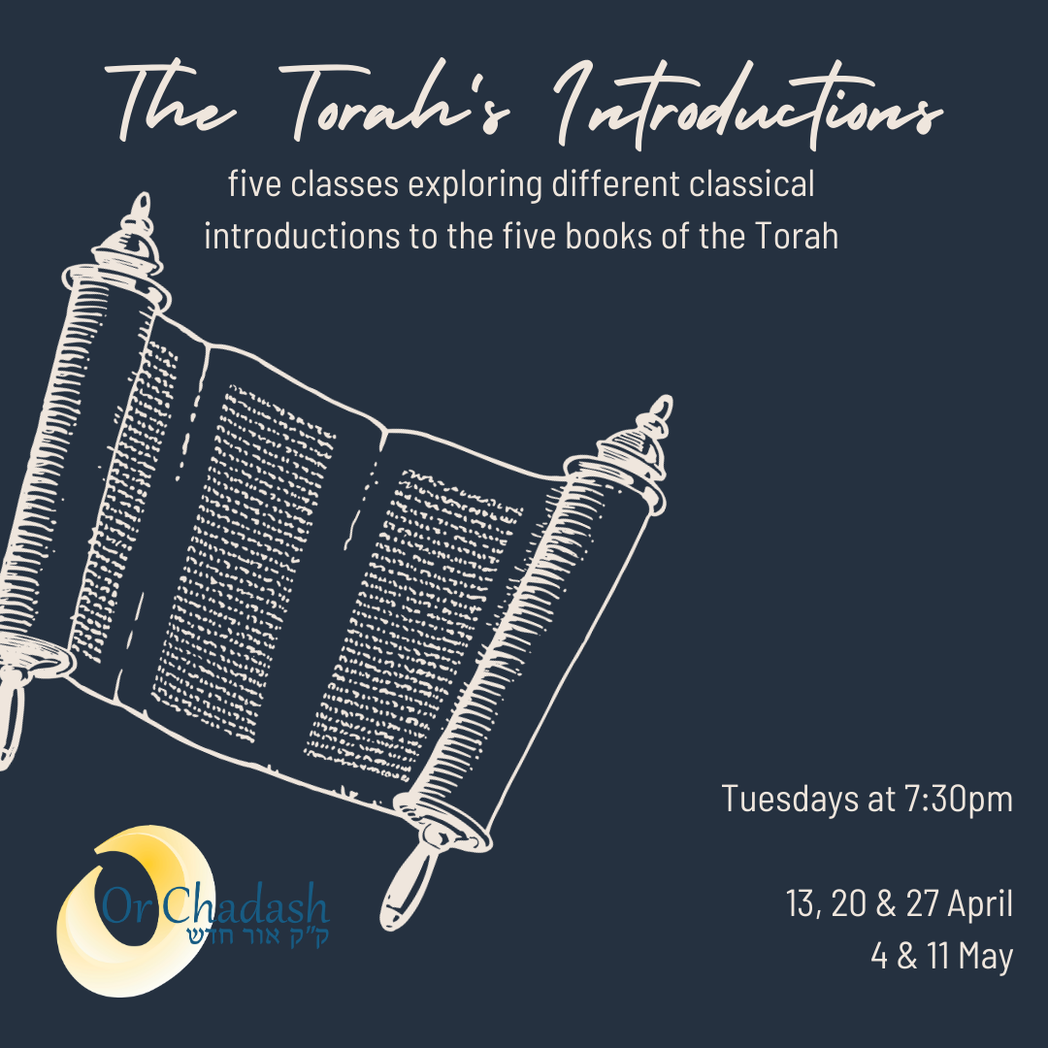
Ramban's commentary on the Torah (five books of Moses) was his last work, and his most well known. He frequently cites and critiques Rashi's commentary, and provides alternative interpretations where he disagrees with Rashi's interpretation. He was prompted to record his commentary by three motives:
- to satisfy the minds of students of the Law and stimulate their interest by a critical examination of the text;
- to justify the ways of God and discover the hidden meanings of the words of Scripture, "for in the Torah are hidden every wonder and every mystery, and in her treasures is sealed every beauty of wisdom";
- to soothe the minds of the students by simple explanations and pleasant words when they read the appointed sections of the Pentateuch on Sabbaths and festivals.
The Or HaChayim is a a commentary on the Chumash after the four methods known collectively as Pardes; it was reprinted several times it became popular with the Hasidim.
Shadal, R'Samuel David Luzatto, 1800-1865, Italy
Shadal’s commentary develops a unique approach to resolving the problem that occurs when the pshat (contextual) meaning of the text conflicts with halakha, as presented in midrash halakha. Shadal argues that the pshat reflects what the Torah means and the midrash reflects the halakha and not biblical interpretation. He claims that instead of being biblical interpretation, the midrash halakha is rabbinic legislation with the desire to take a more lenient position than the Torah text.
- Provides a methodology of how the Torah was written / transcribed (1-5)
- Provides a philosophy of the all subsuming nature of Torah (6-9)
- Provides an understanding of how the above philosophy is reflected in the laws of a sefer Torah
- Concludes with his goals with his commentary
- to bring clear meaning
- to bring kabbalistic approaches
(א) בשם האל הגדול והנורא. אתחיל לכתוב חידושים בפירוש התורה. באימה ביראה ברתת בזיע במורא. מתפלל ומתודה בלב נדכה ונפש שבורה. שואל סליחה מבקש מחילה וכפרה. בקידה בבריכה בהשתחויה. עד שיתפקקו כל חוליות שבשדרה. ונפשי יודעת מאד ידיעה ברורה. שאין ביצת הנמלה כנגד הגלגל העליון צעירה. כאשר חכמתי קטנה ודעתי קצרה כנגד סתרי תורה. הצפונים בביתה הטמונים בחדרה. כי כל יקר וכל פלא. כל סוד עמוק וכל חכמה מפוארה. כמוס עמה חתום באוצרה. ברמז בדבור בכתיבה ובאמירה. כאשר אמר הנביא המפואר בלבוש מלכות והעטרה. משיח אלהי יעקב ונעים הזמירה. לכל תכלה ראיתי קץ. רחבה מצותך מאד. ונאמר פלאות עדותך על כן נצרתם נפשי. (ב) אבל מה אעשה ונפשי חשקה בתורה. והיא בלבי כאש אוכלת בוערה. בכליותי עצורה. לצאת בעקבי הראשונים אריות שבחבורה. גאוני הדורות בעלי גבורה. להכנס עמם בעובי הקורה. לכתוב בהם פשטים בכתובים ומדרשים. במצות ואגדה. ארוכה בכל ושמורה. ואשים למאור פני נרות המנורה הטהורה. פרושי רבנו שלמה. עטרת צבי וצפירת תפארה. מוכתר בנימוסו במקרא במשנה ובגמרא. לו משפט הבכורה. בדבריו אהגה. באהבתם אשגה. ועמהם יהיה לנו משא ומתן דרישה וחקירה. בפשטיו ומדרשיו וכל אגדה בצורה. אשר בפירושיו זכורה. ועם רבי אברהם בן עזרא. תהיה לנו תוכחת מגולה ואהבה מסותרה. (ג) והאל אשר ממנו לבדו אירא. יצילני מיום עברה. יחשכני משגיאות ומכל חטא ועברה. וידריכני בדרך ישרה. ויפתח לנו שערי אורה. ויזכנו ליום הבשורה. כדכתיב מה נאוו על ההרים רגלי מבשר. משמיע שלום מבשר טוב משמיע ישועה. אומר לציון מלך אלהיך. (ד) צרופה אמרתך מאד ועבדך אהבה (תהלים קיט קמ). (ה) צדקתך צדק לעולם ותורתך אמת (תהלים קיט קמב). (ו) צדק עדותיך לעולם. הבינני ואחיה (תהלים קיט קמד).
ונאמר שם: "והוא דיהב אידעתא דלא דגלותא למידע היכן קם עלמא ועובדיהו דמזלתא, שוריא ושולמיא ומצעתהון דזמני שולחפי דזנבותא ודהיכן עבדי זמני ריהטיהון דשמיא וקבעיהון דכוכבי מתנא דבעירא וחימתא דחיויאתא. עוזיהון דרוחי ומחשבתהון דנשי, גינסי דנצבתא וחיליהון דעקרי, כל מדם דכסי וכל מדעם דגלי ידעית. יאמר שהאלהים הוא הנותן דעת, שאין בו שקר, לידע איך קם העולם ומעשה המזלות, הראש והסוף ואמצעות הזמנים ואלכסונות הזנבות, ואיך יעשו הזמנים מרוצת השמים וקביעות הכוכבים, לחות הבהמות וחמת החיות, תוקף הרוחות ומחשבות אדם, יחסי האילנות וכחות השרשים, כל דבר מכוסה וכל דבר מגולה ידעתי. כל זה ידע בתורה והכל מצא בה, בפירושיה בדקדוקיה באותיותיה ובקוציה כאשר הזכרתי.
- To explain the way in which the world was created
- The importance of understanding God's creative mode vs. humanity's creative mode
- the place of God, Torah and Israel
- establish the difference between science and Torah
- develop the theme of unity of the universe and unity of humanity as central to Bereshit



